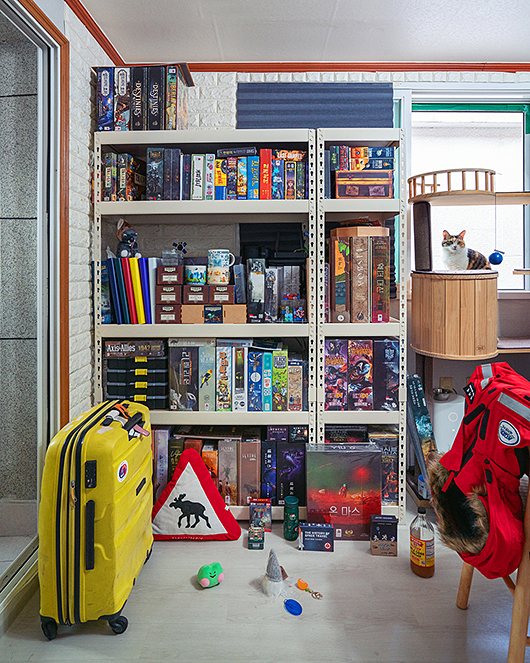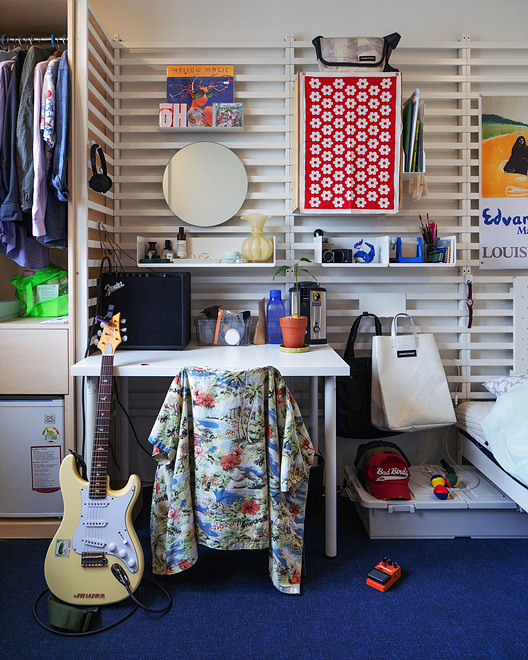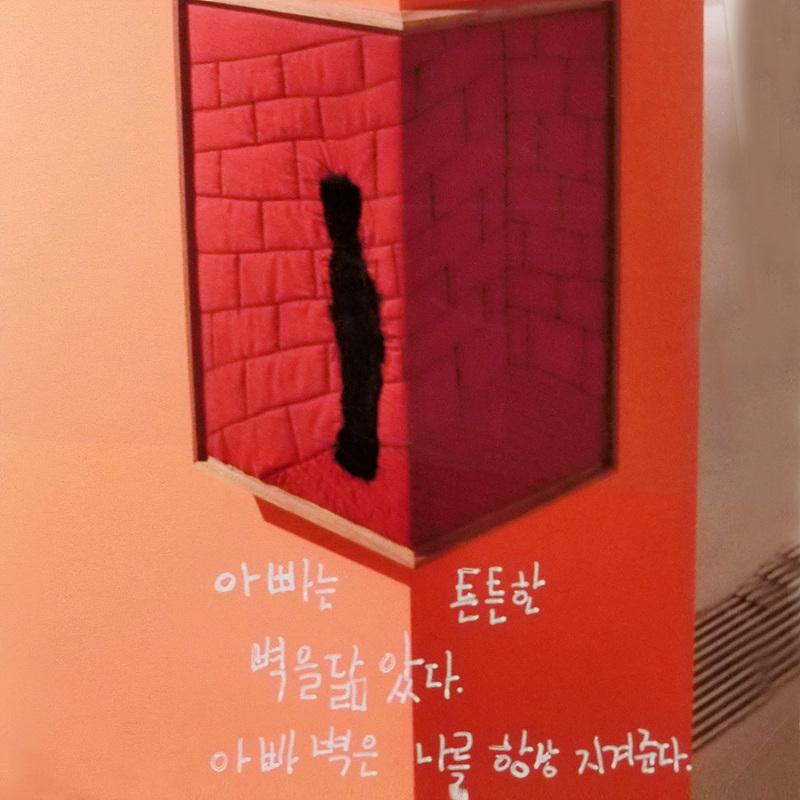Interview with Sunmin Lee (한국어로 보시려면 이곳을 클릭해주세요)
“Ultimately, it’s my curiosity about human life that continues to drive my work.”
Sunmin Lee is a photographer who continuously seeks a connection with the world through her photography. We saw one of her photos from the project The Woman’s House in an online magazine and were immediately captivated by them, perhaps because we saw a reflection of ourselves in her work.
Creative works often reflect the creator's character. Lee chooses photography as a way to communicate with her subjects and she is driven by a desire to understand others. A desire to know more about someone. Could that be considered as love?
As a woman and a mother, I could truly relate to her. In the end, my initial plan of a half hour interview turned out to be a full three and a half hours of deep conversation. We had many questions for her, a predecessor who had walked the path of womanhood and motherhood before us. She encouraged us with sincere and heartfelt advice.
I would like to express my gratitude again to the artist who graciously opened her home to us.
Sanghee Choi, Harbour Press
Can you introduce yourself briefly?
I am Sunmin Lee, a photographer who has been working for about 25 years, focusing on the themes of womanhood, motherhood, and family. Recently, I've been working on portraits focusing on different generations, such as elderly men and young people in their twenties.




What led you to decide to study photography in graduate school?
I remember clearly—when I was in my senior year at university, I went for a teaching practice as part of my education degree. It was my first real experience with the school environment, and I realized that living in a school with children for the rest of my life would be difficult. I wasn't sure if I could continue to work in this field.So, I started thinking about what I could do, and I decided to choose photography as my medium. I had a strong desire to express the thoughts and feelings inside of me, and I wanted to communicate these using the language of art.
I assume that exhibiting your work from 1999 at Donggang International Photo Festival in 2024 must have been special. Could you share your thoughts on it?
About five years ago, I published a book collecting six series of works from 1999 to 2013. The book includes images of my child from when she was nine months old through elementary and middle school, and creating that book made me reflect a lot.This exhibition at Donggang showed not just that period but also new works, particularly my focus on young people in their twenties. Seeing works from 1999 to 2024 in the same exhibition space and reconfiguring them was a deeply emotional experience. It felt like my work had come full circle, like something had been created and then faded away, and that made me reflect on my journey as an artist.


How did you feel when you first heard about your award?
Well...(laughs) Honestly, I wasn’t expecting it. I clearly remember that day —I was on my way back after sending my son off to the army, so I was feeling a bit empty.Sometimes as a photographer, you forget certain photos as you get busy with new work. But when it’s recognised, it brings those works back to life. It’s a reminder of how rewarding this job is, and I was genuinely happy.
You once described yourself as an artist who thought of your work as 'alchemy'. Why did you choose that term?
The term 'alchemist' refers to someone who has honed a particular skill for a long time, mastering it and creating something pure from it. I think my father’s generation was like that. They did one thing for a long time without taking on side jobs, and my father was the same. I’m not someone who can do many different things at once. I don’t have the talent for it.After having children, I realized how much focus and technical skill parenting requires, even if society doesn’t always acknowledge it. It felt like an alchemical process, and in that sense, I think my life as both an artist and a mother was like carrying out an alchemical practice on a daily basis.




When you approach someone for a photoshoot, do you have a strategy?
Older generations or middle-aged people often ask, "What are you going to do with these photos? Are you going to sell them online?" But young people seem to trust me more easily. They don’t question it much, and they say, "Why not." Of course, I tell them I’ll give them their photos.(laughs)When I was working at a place called "Local Stitch," I guess I was overwhelmed at times.
Because of the energy of young people?
Yes, their energy, passion, and interest.That’s probably why they were so willing to open their homes to you. I was a bit surprised.
If you think about it, seeing someone every day for about three months, even without having deep conversations, you are still constantly observing them. Then, one day, when you have an opportunity to have a conversation, there’s already a sense of trust built up. Even though you haven't talked much, it feels like you know each other.So, it progressed naturally. And I didn’t start by taking photos of their rooms.
I almost didn’t intend to take pictures of the rooms. In the beginning, I started shooting in some interesting spaces in Euljiro, or at lounges or kitchens of the shared office where we met. But they brought so many props and objects, I started getting curious during the shoot.
"What else do you have?"
Then they asked, "Would you like to see my room?"
"Let’s go."
So, I went and saw the things that I captured in my photos.
I think after that day, I started taking pictures of people in their rooms. I realized there were more of them I hadn’t seen before visiting their places.



Your work has a theme of 'connection,' and photography seems to be the evidence of that. What drives you to continue your work and pursue these series?
When I started photography, I had many things I wanted to say, but I wasn’t quite sure how to define them. There was a lot of inner conflict that I wanted to address through photography, and I wanted feedback on those questions. Even now, I don’t feel like that passion has diminished. In my twenties, I had two or three questions I wanted to explore, but now I have more—deeper aspects of life that I want to address.Ultimately, it’s my curiosity about human life that continues to drive my work.
Do you have a goal as a photographer?
Before I got married, I was making scenes for my photography work. I would work with my friends to set the stage, recruit models, and so on. It takes a huge effort. But after becoming a mother, I couldn’t do those kinds of projects anymore. I reflected on what kind of story I could tell then.
That led to the first photo in my book, The Woman's House. It was a self-portrait with my nine-month-old daughter.
Life doesn’t stop. It keeps going. Children grow and I also grow or age. That’s the process of life—birth, growth, aging, death, joy, anger, sorrow, and pleasure. These are something that I hope my work can convey. Although I am currently focusing on young people in their 20s, I hope my work will expand and eventually reach a more horizontal perspective.
As a woman and a mother, there must have been moments of conflict. How did you navigate these challenges?
After getting married and becoming a parent, I think these conflicts are natural for women. In my case, The Woman’s House I and The Woman’s House II, each contains 15 images. That means I went out to shoot 15 times for each series. (laughs) I really had no time.
Most of the time, I would go out on Sundays, take some photos, and come back home. My husband would be watching the kids while I was out shooting. When I got home, I’d have a pile of film rolls, sometimes forgetting about them entirely. Even though I really wanted to develop them, I just couldn’t find the time.
But in the end, responsibility plays such an important role in our lives. As a mother, I had to do my responsibilities well. At the same time, I started my work because I had so much to say, it wouldn’t have been possible for me to completely erase my existence and ignore my desire to create. So, I think I was struggling to balance both of these aspects—motherhood and my artistic work—without letting either one slip away.
Actually, I believe it’s okay to embrace more than just two identities.
The time we live in is long, and there are joys in the parenting that we encounter daily. The things we feel through raising my children are part of it. There’s also the joy I find in my work, and there may be other things I discover along the way. Personally, I’ve wanted to do something more altruistic as well.







About ten years ago, I started working in cultural and arts education. I’ve worked with minority groups, immigrant youth, teenagers, seniors, and young orphanage teenagers preparing for independence. Through these experiences, I’ve been able to broaden my perspective and connect with a wider world.
In our society, we often live too focused on ourselves. Especially among artists, there's a tendency to become obsessed with one’s own emotions and thoughts, and sometimes we invest too much energy in that.
If life were like a mountain hike, I think it would be nice if we could enjoy and connect with the different landscapes or places we encounter along the way in a relaxed and joyful way. We shouldn’t be afraid of that, although it seems that many people today are afraid of it.
Lastly, what’s for dinner tonight?
We eat quite simple things at home—kimchi stew, Korean doenjang soup, and try to eat a lot of vegetables. Tonight, I’ll probably have salad and kimbap. I personally think that kimbap is one of the greatest foods in the world! (laughs)